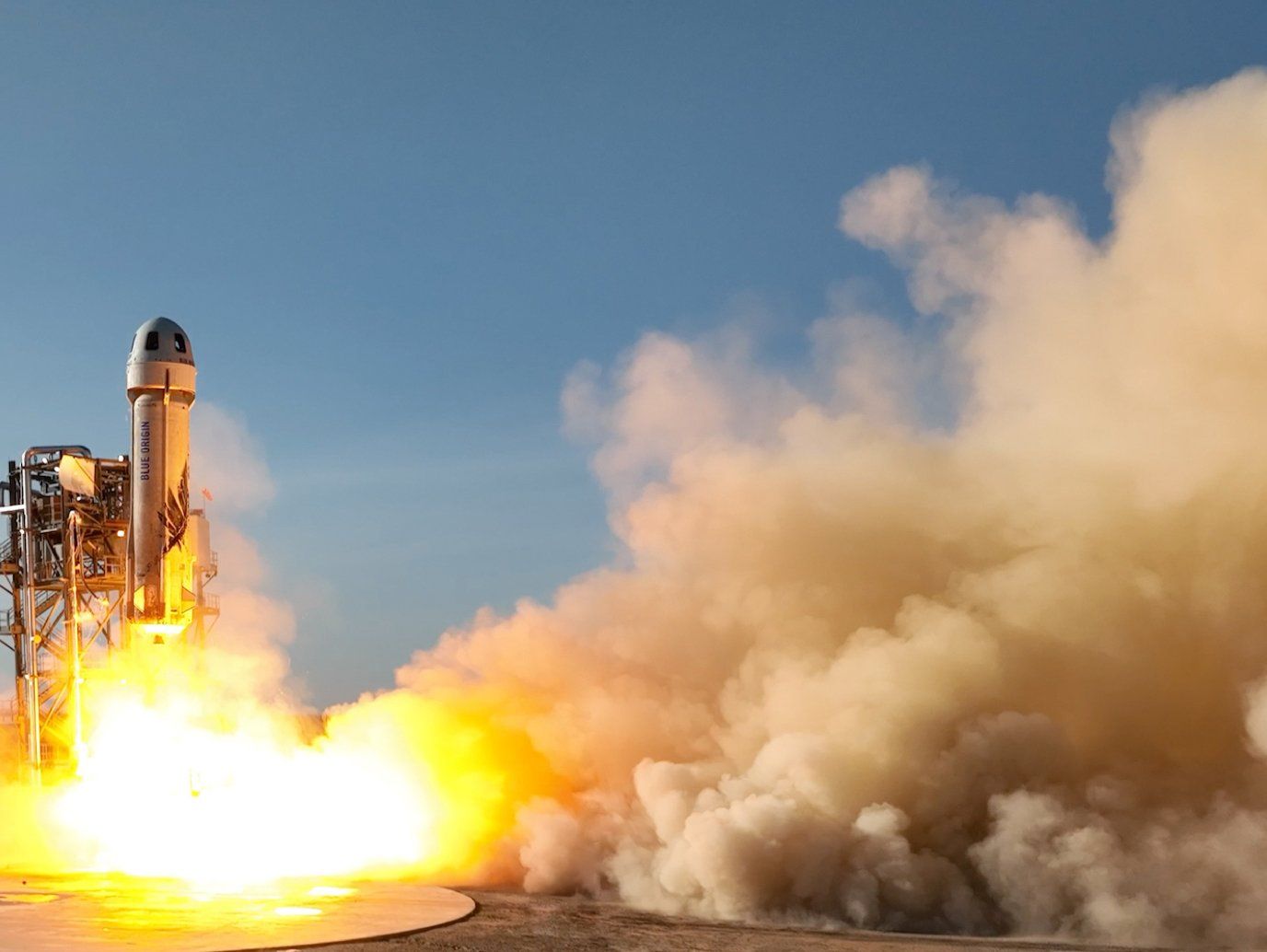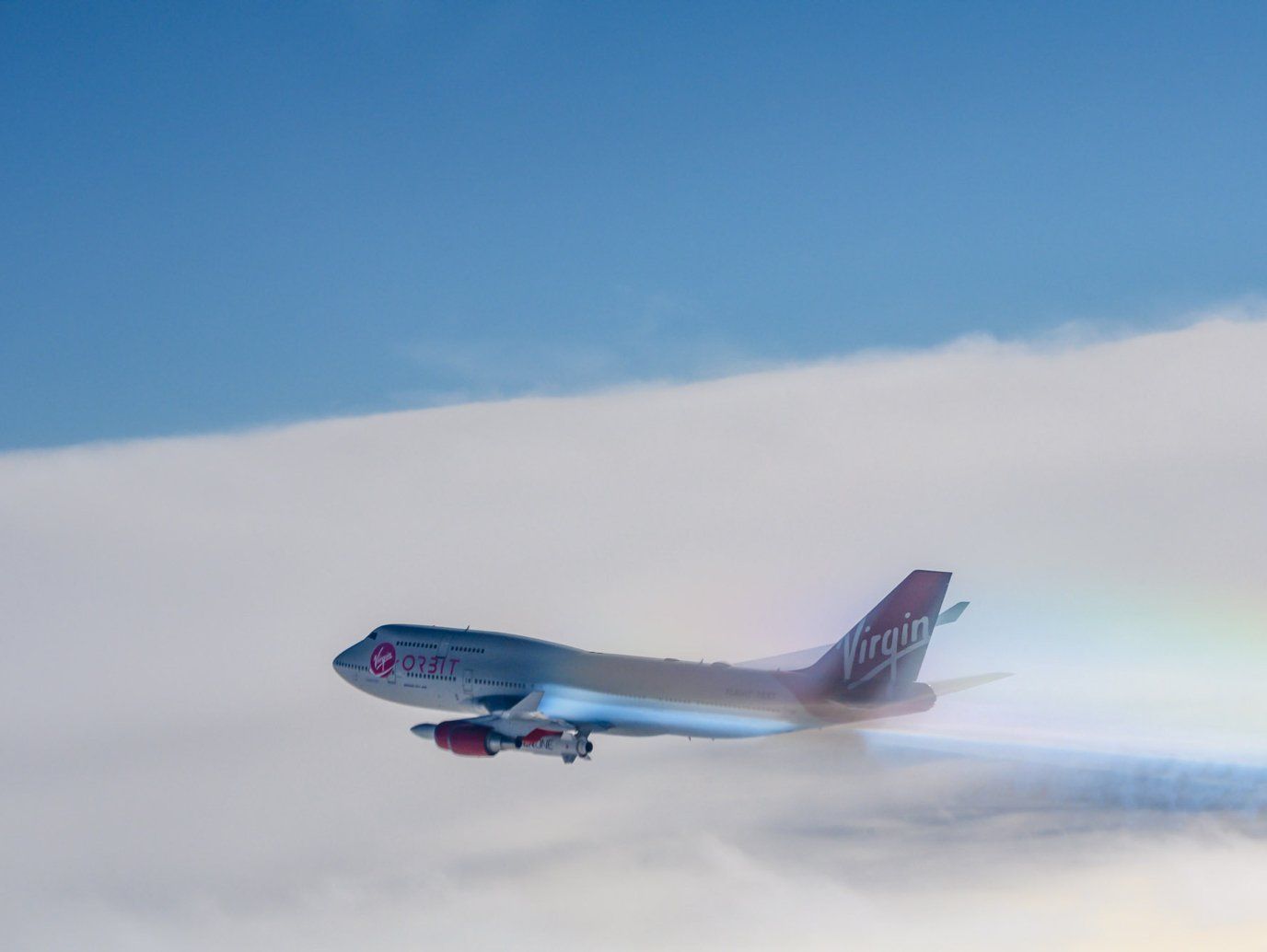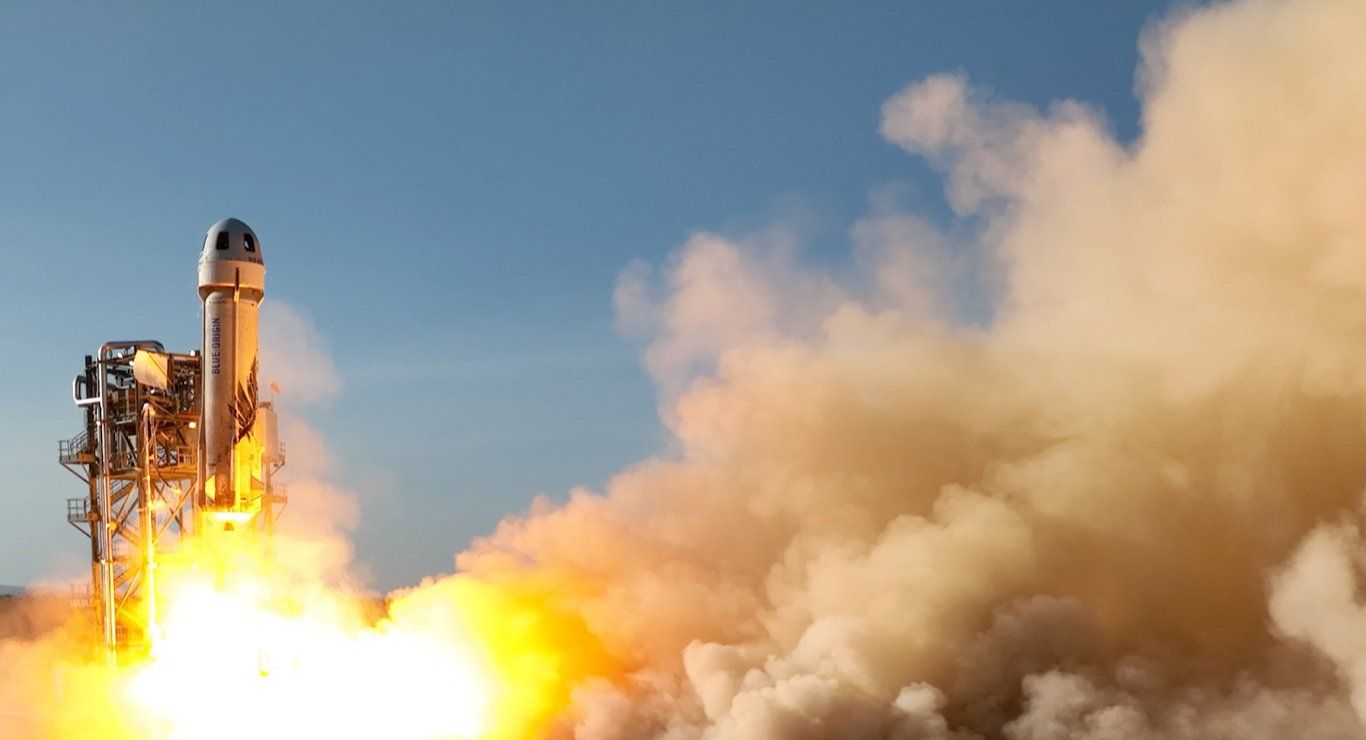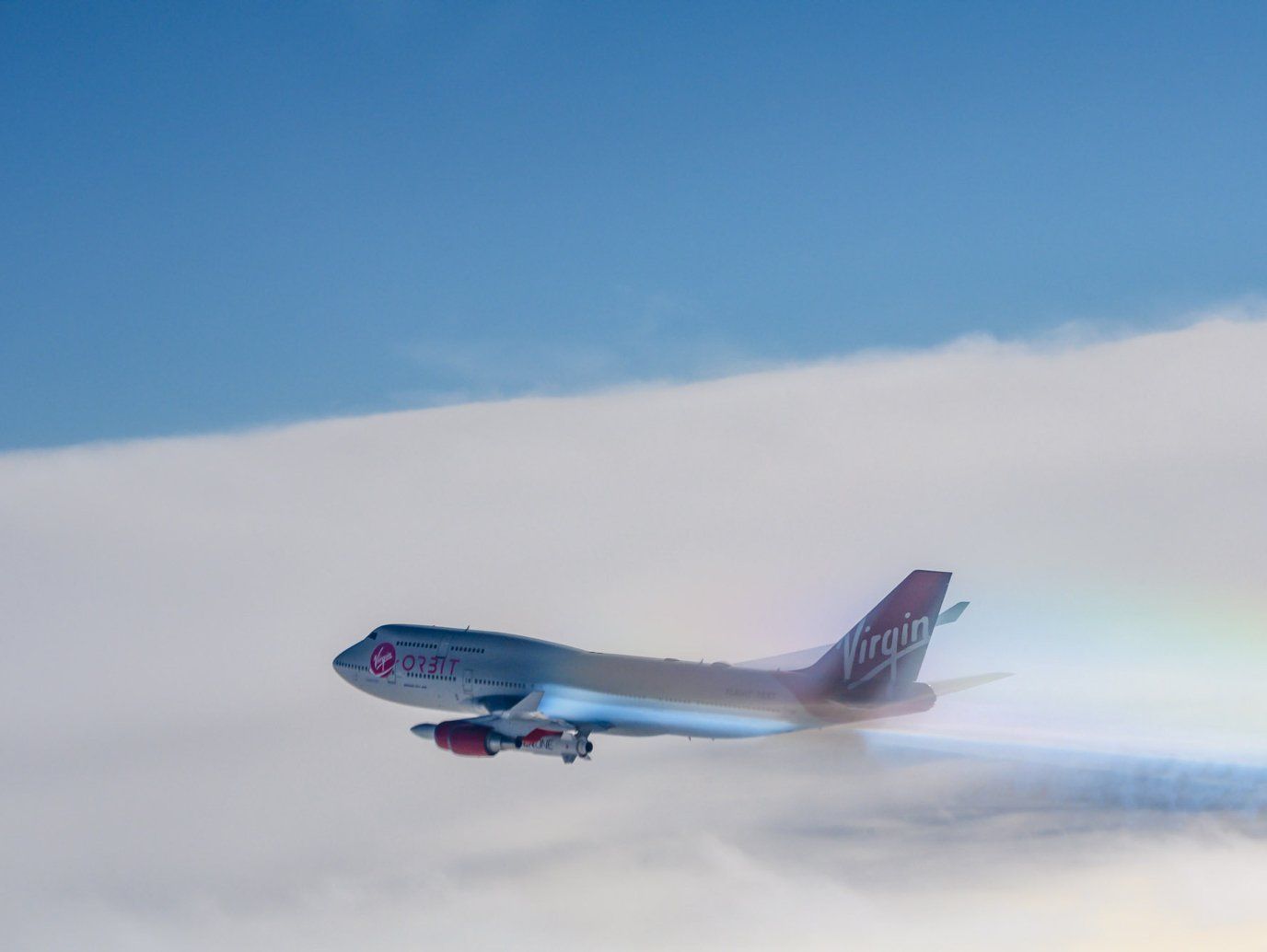19 - 23 September 2022
After the IAC, we might again be building peaceful and innovative partnerships in space

SpaceX are looking to offer Starlink services in Iran (Image: Unsplash)
In the backdrop of a global economy on the brink, spurred on by conflict, an energy crisis and supply chain bottlenecks, the International Astronautical Congress (IAC) took place this week, offering a more positive outlook for an industry still geared for growth. An array of new announcements provided us with clear evidence that innovation and cooperation is continually helping the sector grow, and provides a new avenue for economic prosperity.
Innovative technology is opening doors in the industry, allowing for new opportunities to arise, from power generation on the moon, and reusable launch technology. Furthermore, cooperation between businesses and public agencies not only helps discover new technology, but also provides hope that bridges can be built, which in turn can help build a peaceful space economy. Can this success continue to build, and will space manage to steer clear of the fallout from deteriorating international relations?

Blue Origin closer to completing their BE-4 engines (Image: Blue Origin)
Innovation continues to open doors to new possibilities
In the days after the IAC there were a series of exciting announcements, as companies and governments plan their next moves in the space sector, opening up new possibilities and increasing competition. Furthermore, China are now also moving forwards with their plans to enter the space tourism market, and open up the possibility of taking commercial passengers into space.
Yang Yiqiang, Director of the Aerospace Flight Science and Technology Center at the Chinese Academy of Sciences, explained China’s commercial space ambitions, and China could start suborbital travel by 2025. Symbolically as well as technologically, this would be a great achievement, following in the footsteps of Blue Origin and Virgin Galactic. China will also be looking to develop partially and fully-reusable launch vehicles, quite likely in response to SpaceX.
Reusable rocket technology is clearly becoming the key ambition for private and public sector companies, with Arianespace also announcing this week their SUSIE reusable upper stage spacecraft that could carry heavy payloads to space. This apparently could serve as cargo transport as well as crewed missions. Blue Origin have also announced that they are now closer to completion of their highly anticipated BE-4 engines, which would serve to reduce reliance on Russian technology. Also some much welcome good news for Blue after their recent failed New Shepherd launch.
Blue’s rivals, SpaceX, could still be looking to launch their highly anticipated Starship this year, with Elon Musk saying there is a high probability of a November launch. This could prove to be quite the race in itself, with Artemis nearing launch, Starship closer to launch and Blue close to releasing their new engines. 2022 could still witness some major milestones.

Virgin Orbit to provide launch services in Australia (Image: Virgin Orbit)
Partnerships provide tech solutions and could build a peaceful framework
A running theme this week seems to have been of new partnerships and cooperation, whether through striving for technological innovation or sharing technology such as launch capabilities. These partnerships could provide hope for the construction of a peaceful framework in the sector. One such example of this the UAE and their Rashid lunar rover, already slated to launch later this year with Japanese based lander iSpace, atop a Falcon-9.
However, it has also been announced that the UAE will also launch Rashid with China, possibly in 2026. Rashid 2 is set to be part of China’s Chang’e-7 mission, to the lunar south pole. The UAE could be a prime example of new space nations being able to mediate between adversaries in the space sector, working both US-based SpaceX and China. Perhaps similarly, SpaceX have applied for an exemption from sanctions in order to be able to provide their Startlink services to Iran, in a move that could also see the possibility of space opening up new avenues for peaceful cooperation.
The announcements didn’t stop there. Turkey and US-based Axiom have also signed an agreement to send the first Turkish astronaut into space, and Canada will also be looking to work with Axiom for new astronaut flights. Axiom appear to becoming a key player, with these announcements adding to their growing list of plans, including their commercial space station and providing the new space suits for the Artemis missions.
Another prominent name in commercial space, Sierra Space, have signed an MOU with CisLunar Industries, proving support with the former’s Dreamchaser space plane, Orbital Reef station and their inflatable space habitat. Also, another MOU was signed between Bradford Space, Redwire Corporation and the Swedish Space Corporation, in order to provide a commercial orbital debris removal service. Virgin Orbit will also be looking to expand their services after signing an agreement with Wagner Corporation. The deal will hopefully see Virgin launch from Australia, using Toowoomba Wellcamp Airport.
Lastly, hotel chain Hilton will design the crew suites for anticipated space station, Starlab, being developed by Nanoracks, Voyager Space and Lockheed Martin. This doesn’t only represent the establishing of new partnerships, but the space industry supply chain being expanded and incorporating more types of businesses. As access increases, and space travel becomes more normalised, will we see more established and recognised names entering the space sector, in order to provide and design familiar and intuitive experiences for commercial travellers?
Whilst in the aftermath of the IAC it appears that new and prosperous relations are forming, there are still problems surrounding the relationships between the major space nations of China, Russia and the US. NASA chief Bill Nelson this week announced that he would be open for cooperation with China, but claimed that this possibility would be “up to China”. However, the US Wolf Amendment is still in place, which prevents public money being spent on certain cooperative projects with China.
China and the US may have come to an impasse, but US-Russia relations in space appear to be holding on. Despite their differences over Ukraine, they will continue with cooperative missions, with a US astronaut joining Russian cosmonauts on a Soyuz launch this week. Roscosmos head, Yury Borisov, has also announced that cooperation on the ISS could continue until 2028, four years more than previously thought. If this goes to show anything, it is that space can be a sphere in which cooperation can still take place, and even prosper, as shown by the number of new partnerships announced this week. Space could be the platform were relationships are mended.
External Links
This Week
*News articles posted here are not property of ANASDA GmbH and belong to their respected owners. Postings here are external links only.
Our future in space

SpaceX are looking to offer Starlink services in Iran (Image: Unsplash)
19 - 23 September 2022
After the IAC, we might again be building peaceful and innovative partnerships in space
In the backdrop of a global economy on the brink, spurred on by conflict, an energy crisis and supply chain bottlenecks, the International Astronautical Congress (IAC) took place this week, offering a more positive outlook for an industry still geared for growth. An array of new announcements provided us with clear evidence that innovation and cooperation is continually helping the sector grow, and provides a new avenue for economic prosperity.
Innovative technology is opening doors in the industry, allowing for new opportunities to arise, from power generation on the moon, and reusable launch technology. Furthermore, cooperation between businesses and public agencies not only helps discover new technology, but also provides hope that bridges can be built, which in turn can help build a peaceful space economy. Can this success continue to build, and will space manage to steer clear of the fallout from deteriorating international relations?

Blue Origin closer to completing their BE-4 engines (Image: Blue Origin)
Innovation continues to open doors to new possibilities
In the days after the IAC there were a series of exciting announcements, as companies and governments plan their next moves in the space sector, opening up new possibilities and increasing competition. Furthermore, China are now also moving forwards with their plans to enter the space tourism market, and open up the possibility of taking commercial passengers into space.
Yang Yiqiang, Director of the Aerospace Flight Science and Technology Center at the Chinese Academy of Sciences, explained China’s commercial space ambitions, and China could start suborbital travel by 2025. Symbolically as well as technologically, this would be a great achievement, following in the footsteps of Blue Origin and Virgin Galactic. China will also be looking to develop partially and fully-reusable launch vehicles, quite likely in response to SpaceX.
Reusable rocket technology is clearly becoming the key ambition for private and public sector companies, with Arianespace also announcing this week their SUSIE reusable upper stage spacecraft that could carry heavy payloads to space. This apparently could serve as cargo transport as well as crewed missions. Blue Origin have also announced that they are now closer to completion of their highly anticipated BE-4 engines, which would serve to reduce reliance on Russian technology. Also some much welcome good news for Blue after their recent failed New Shepherd launch.
Blue’s rivals, SpaceX, could still be looking to launch their highly anticipated Starship this year, with Elon Musk saying there is a high probability of a November launch. This could prove to be quite the race in itself, with Artemis nearing launch, Starship closer to launch and Blue close to releasing their new engines. 2022 could still witness some major milestones.

Virgin Orbit to provide launch services in Australia (Image: Virgin Orbit)
Partnerships provide tech solutions and could build a peaceful framework
A running theme this week seems to have been of new partnerships and cooperation, whether through striving for technological innovation or sharing technology such as launch capabilities. These partnerships could provide hope for the construction of a peaceful framework in the sector. One such example of this the UAE and their Rashid lunar rover, already slated to launch later this year with Japanese based lander iSpace, atop a Falcon-9.
However, it has also been announced that the UAE will also launch Rashid with China, possibly in 2026. Rashid 2 is set to be part of China’s Chang’e-7 mission, to the lunar south pole. The UAE could be a prime example of new space nations being able to mediate between adversaries in the space sector, working both US-based SpaceX and China. Perhaps similarly, SpaceX have applied for an exemption from sanctions in order to be able to provide their Startlink services to Iran, in a move that could also see the possibility of space opening up new avenues for peaceful cooperation.
The announcements didn’t stop there. Turkey and US-based Axiom have also signed an agreement to send the first Turkish astronaut into space, and Canada will also be looking to work with Axiom for new astronaut flights. Axiom appear to becoming a key player, with these announcements adding to their growing list of plans, including their commercial space station and providing the new space suits for the Artemis missions.
Another prominent name in commercial space, Sierra Space, have signed an MOU with CisLunar Industries, proving support with the former’s Dreamchaser space plane, Orbital Reef station and their inflatable space habitat. Also, another MOU was signed between Bradford Space, Redwire Corporation and the Swedish Space Corporation, in order to provide a commercial orbital debris removal service. Virgin Orbit will also be looking to expand their services after signing an agreement with Wagner Corporation. The deal will hopefully see Virgin launch from Australia, using Toowoomba Wellcamp Airport.
Lastly, hotel chain Hilton will design the crew suites for anticipated space station, Starlab, being developed by Nanoracks, Voyager Space and Lockheed Martin. This doesn’t only represent the establishing of new partnerships, but the space industry supply chain being expanded and incorporating more types of businesses. As access increases, and space travel becomes more normalised, will we see more established and recognised names entering the space sector, in order to provide and design familiar and intuitive experiences for commercial travellers?
Whilst in the aftermath of the IAC it appears that new and prosperous relations are forming, there are still problems surrounding the relationships between the major space nations of China, Russia and the US. NASA chief Bill Nelson this week announced that he would be open for cooperation with China, but claimed that this possibility would be “up to China”. However, the US Wolf Amendment is still in place, which prevents public money being spent on certain cooperative projects with China.
China and the US may have come to an impasse, but US-Russia relations in space appear to be holding on. Despite their differences over Ukraine, they will continue with cooperative missions, with a US astronaut joining Russian cosmonauts on a Soyuz launch this week. Roscosmos head, Yury Borisov, has also announced that cooperation on the ISS could continue until 2028, four years more than previously thought. If this goes to show anything, it is that space can be a sphere in which cooperation can still take place, and even prosper, as shown by the number of new partnerships announced this week. Space could be the platform were relationships are mended.
Share this article
External Links
This Week
*News articles posted here are not property of ANASDA GmbH and belong to their respected owners. Postings here are external links only.
19 - 23 Sept 2022
After the IAC, we might again be building peaceful and innovative partnerships in space

SpaceX are looking to offer Starlink services in Iran (Image: Unsplash)
In the backdrop of a global economy on the brink, spurred on by conflict, an energy crisis and supply chain bottlenecks, the International Astronautical Congress (IAC) took place this week, offering a more positive outlook for an industry still geared for growth. An array of new announcements provided us with clear evidence that innovation and cooperation is continually helping the sector grow, and provides a new avenue for economic prosperity.
Innovative technology is opening doors in the industry, allowing for new opportunities to arise, from power generation on the moon, and reusable launch technology. Furthermore, cooperation between businesses and public agencies not only helps discover new technology, but also provides hope that bridges can be built, which in turn can help build a peaceful space economy. Can this success continue to build, and will space manage to steer clear of the fallout from deteriorating international relations?

Blue Origin closer to completing their BE-4 engines (Image: Blue Origin)
Innovation continues to open doors to new possibilities
In the days after the IAC there were a series of exciting announcements, as companies and governments plan their next moves in the space sector, opening up new possibilities and increasing competition. Furthermore, China are now also moving forwards with their plans to enter the space tourism market, and open up the possibility of taking commercial passengers into space.
Yang Yiqiang, Director of the Aerospace Flight Science and Technology Center at the Chinese Academy of Sciences, explained China’s commercial space ambitions, and China could start suborbital travel by 2025. Symbolically as well as technologically, this would be a great achievement, following in the footsteps of Blue Origin and Virgin Galactic. China will also be looking to develop partially and fully-reusable launch vehicles, quite likely in response to SpaceX.
Reusable rocket technology is clearly becoming the key ambition for private and public sector companies, with Arianespace also announcing this week their SUSIE reusable upper stage spacecraft that could carry heavy payloads to space. This apparently could serve as cargo transport as well as crewed missions. Blue Origin have also announced that they are now closer to completion of their highly anticipated BE-4 engines, which would serve to reduce reliance on Russian technology. Also some much welcome good news for Blue after their recent failed New Shepherd launch.
Blue’s rivals, SpaceX, could still be looking to launch their highly anticipated Starship this year, with Elon Musk saying there is a high probability of a November launch. This could prove to be quite the race in itself, with Artemis nearing launch, Starship closer to launch and Blue close to releasing their new engines. 2022 could still witness some major milestones.

Virgin Orbit to provide launch services in Australia (Image: Virgin Orbit)
Partnerships provide tech solutions and could build a peaceful framework
A running theme this week seems to have been of new partnerships and cooperation, whether through striving for technological innovation or sharing technology such as launch capabilities. These partnerships could provide hope for the construction of a peaceful framework in the sector. One such example of this the UAE and their Rashid lunar rover, already slated to launch later this year with Japanese based lander iSpace, atop a Falcon-9.
However, it has also been announced that the UAE will also launch Rashid with China, possibly in 2026. Rashid 2 is set to be part of China’s Chang’e-7 mission, to the lunar south pole. The UAE could be a prime example of new space nations being able to mediate between adversaries in the space sector, working both US-based SpaceX and China. Perhaps similarly, SpaceX have applied for an exemption from sanctions in order to be able to provide their Startlink services to Iran, in a move that could also see the possibility of space opening up new avenues for peaceful cooperation.
The announcements didn’t stop there. Turkey and US-based Axiom have also signed an agreement to send the first Turkish astronaut into space, and Canada will also be looking to work with Axiom for new astronaut flights. Axiom appear to becoming a key player, with these announcements adding to their growing list of plans, including their commercial space station and providing the new space suits for the Artemis missions.
Another prominent name in commercial space, Sierra Space, have signed an MOU with CisLunar Industries, proving support with the former’s Dreamchaser space plane, Orbital Reef station and their inflatable space habitat. Also, another MOU was signed between Bradford Space, Redwire Corporation and the Swedish Space Corporation, in order to provide a commercial orbital debris removal service. Virgin Orbit will also be looking to expand their services after signing an agreement with Wagner Corporation. The deal will hopefully see Virgin launch from Australia, using Toowoomba Wellcamp Airport.
Lastly, hotel chain Hilton will design the crew suites for anticipated space station, Starlab, being developed by Nanoracks, Voyager Space and Lockheed Martin. This doesn’t only represent the establishing of new partnerships, but the space industry supply chain being expanded and incorporating more types of businesses. As access increases, and space travel becomes more normalised, will we see more established and recognised names entering the space sector, in order to provide and design familiar and intuitive experiences for commercial travellers?
Whilst in the aftermath of the IAC it appears that new and prosperous relations are forming, there are still problems surrounding the relationships between the major space nations of China, Russia and the US. NASA chief Bill Nelson this week announced that he would be open for cooperation with China, but claimed that this possibility would be “up to China”. However, the US Wolf Amendment is still in place, which prevents public money being spent on certain cooperative projects with China.
China and the US may have come to an impasse, but US-Russia relations in space appear to be holding on. Despite their differences over Ukraine, they will continue with cooperative missions, with a US astronaut joining Russian cosmonauts on a Soyuz launch this week. Roscosmos head, Yury Borisov, has also announced that cooperation on the ISS could continue until 2028, four years more than previously thought. If this goes to show anything, it is that space can be a sphere in which cooperation can still take place, and even prosper, as shown by the number of new partnerships announced this week. Space could be the platform were relationships are mended.
Share this article
External Links
This Week
*News articles posted here are not property of ANASDA GmbH and belong to their respected owners. Postings here are external links only.



















